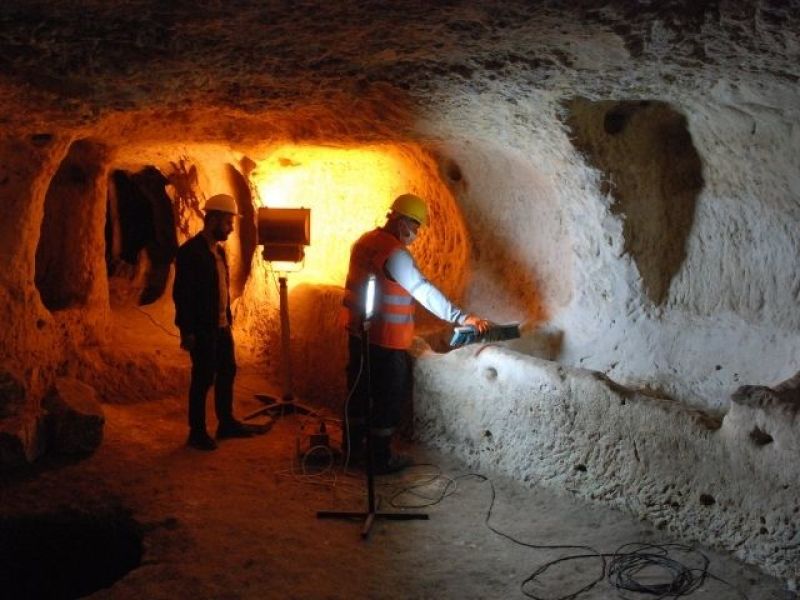
Archeologists uncovered a 2,000-year-old underground city in southern Turkey that is thought to be the largest of its kind that may have served as a shelter for early Christians fleeing Roman persecution.
The first underground chambers of the ancient complex were discovered roughly two years ago during a project in the Midyat district of Mardin province to clean and maintain old streets and residences, according to Live Science.
According to Gani Tarkan, the director of the Mardin Museum and the project's head of excavations, the project's workers initially uncovered a limestone cave, followed by a route into the rest of the subterranean city. However, Tarkan noted that while some of the locals were aware that there were caves beneath Midyat, they were unaware that there was an entire underground city.
Now, 49 chambers, as well as connecting corridors, water wells, grain storage silos, rooms of residences, and places of worship, including a Christian church and a massive hall with a Star of David emblem on the wall, were thought to be a Jewish synagogue, have been discovered in the colossal complex.
According to Tarkan, artifacts discovered in the caverns, such as Roman-era coins and oil lamps, show that the subterranean complex was erected in the second or third centuries A.D.
There's still a lot to explore. Tarkan thought that just around 5% of the underground city, now known as Matiate, has been investigated so far, covering an area of more than 100,000 square feet (10,000 square m). He estimated that the total facility was greater than 4 million square feet (400,000 square meters) and could have held between 60,000 and 70,000 people.
"It was first built as a hiding place or escape area," he stated, suggesting that the city has served as a shelter.
Also Read: Byzantine-Era Gold Coin Depicting Jesus' Crucifixion Unearthed Near Tel-Aviv
Hidden City Expects to Become Tourist Attraction
According to ancient geographers, Christians first settled in the southern region of what is now Turkey, and Christians in the area were persecuted not only by the Romans but also by the Persians in the fourth century.
During times of war, medieval travelers in the region reported finding large towns and cities bereft of inhabitants, so it's possible that the locals hid underground in sites like Matiate, he added.
Early Christians may have fled Matiate to elude Roman persecution, according to Lozan Bayar, an archaeologist with Mardin's Office for Protection and Supervision. He told the Turkish news site Hürriyet Daily News that in the early days of Christianity, Rome was influenced by pagans before eventually recognizing Christianity as an official religion. Such underground cities gave confidence to people to freely practice their beliefs and security from harsh persecution.
The Hurrians, who occupied areas of central and southern Anatolia (in modern-day Turkey) up to 4,000 years ago, are thought to have constructed the ancient city of Midyat over the subterranean complex.
Midyat was occupied by Arameans, Persians, Greeks, Romans, Byzantines, and Ottomans. Each civilization had built architectural works which now draw up to 3 million tourists every year. When the excavations are finished, Tarkan expects the secret city of Matiate will be an added attraction.
Related Article: Israeli Christian Villager Discovers Church Ruins From Crusader Era Hidden In His Home



















